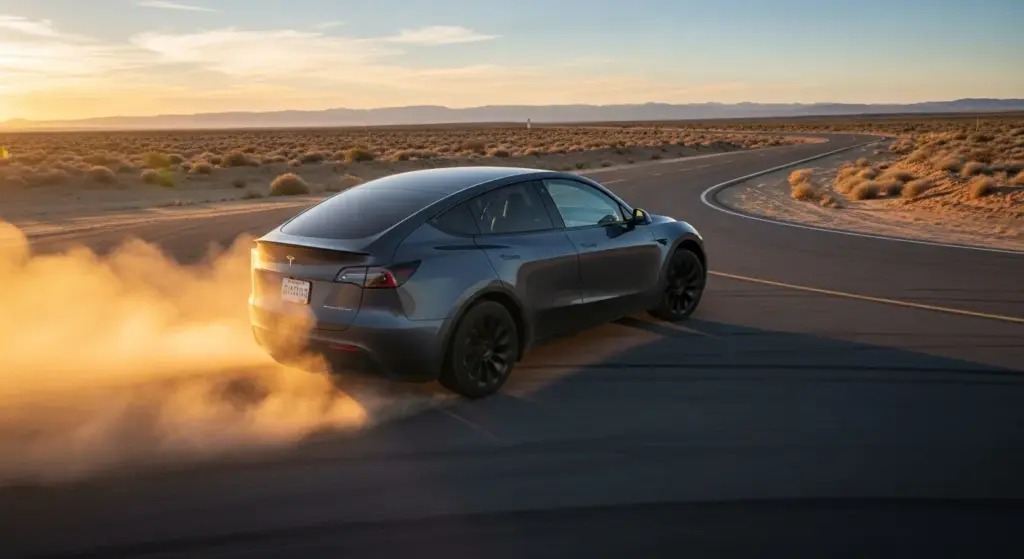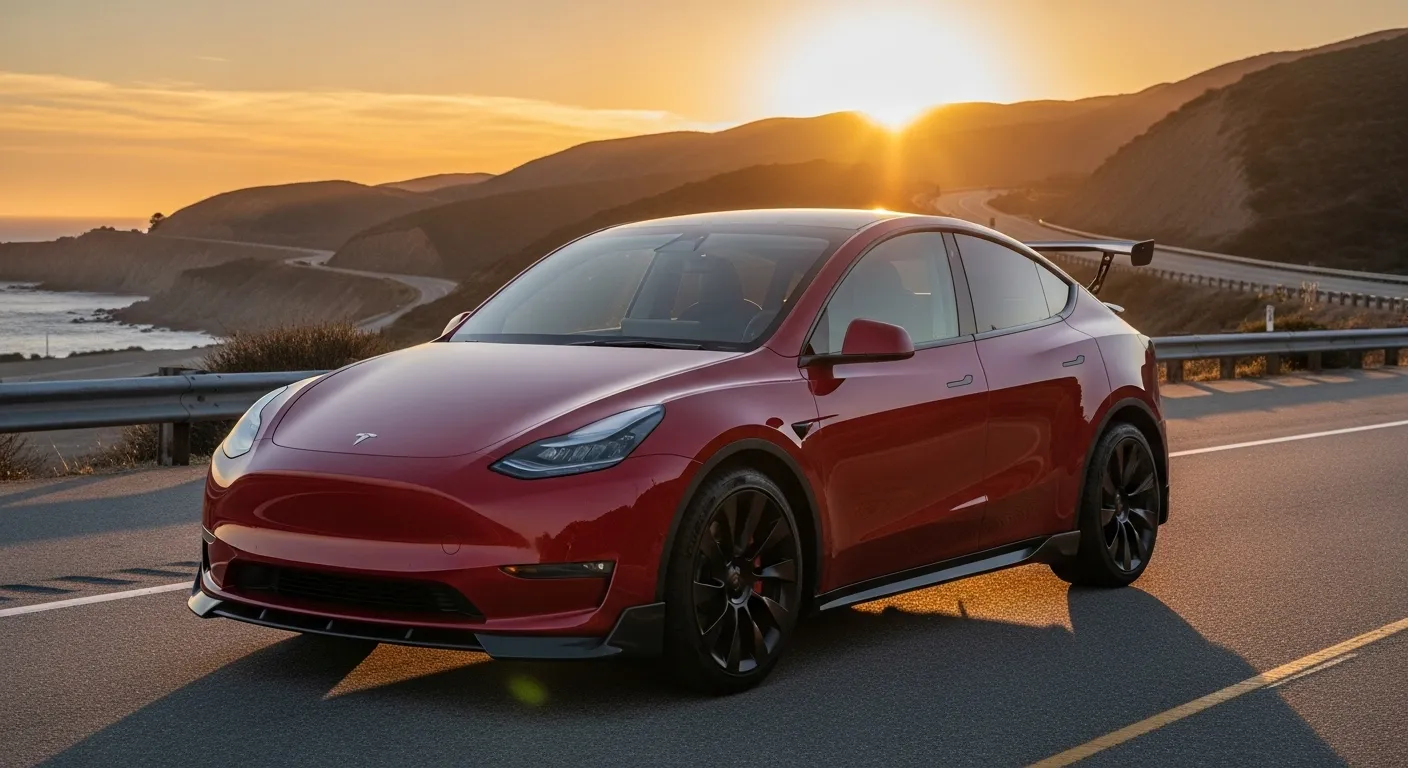As U.S. drivers grow more discerning about electric vehicles, Tesla is under mounting pressure to push beyond just baseline EVs. With gas prices still volatile, incentives fading, and rivals catching up, launching a high-performance variant is bold. The 2026 Tesla Model Y Performance isn’t just about speed—it’s a statement that Tesla wants to reinvigorate excitement in the EV crossover space.
For American buyers and enthusiasts, this matters now more than ever. The electric SUV segment is crowded with strong offerings from Ford, Hyundai, and GM. A sharp, feature-rich “Performance” trim helps Tesla differentiate not just on range, but driving excitement. Plus, gaining bi-directional charging (V2L/V2H) and overhauls in suspension mean this isn’t just a trim bump—it’s a technical leap.
Let’s dive into what’s new, how it performs in real life, where it beats (or lags) rivals, and whether it’s worth ordering now.
What’s New: Visual & Hardware Upgrades

Tesla didn’t hold back when refreshing the Model Y for 2026, especially on the Performance version. The U.S. model carries exterior tweaks including new front and rear bumpers, gloss-black trim accents, a carbon fiber rear spoiler, and red brake calipers that underscore its sport intent.
Under the skin, the 2026 Performance version borrows a performance-tuned suspension setup from the Model 3 Performance, with revised springs, anti-roll bars, bushings, and updated suspension geometry to sharpen handling. The 21-inch “Arachnid 2.0” wheels (staggered setup) paired with Pirelli P Zero tires help deliver better grip and sharper turn-in.
Please take a look at this post as well: A 56-Year-Old Mustang Just Raised $250,000 for a Good Cause — Here’s the Story
Inside, you’ll find performance-oriented seats with power thigh extension, heating, ventilation, carbon-fiber trim touches, and an upgraded 16-inch center display (versus 15.4″ on non-Performance). Rear passengers get power-reclining seats and an 8″ rear console display, though some features are trimmed to balance weight. Tesla also improved acoustics (more sound deadening, better seals) to quiet the cabin.
These upgrades are not just cosmetic—they shift the Model Y Performance from “fast SUV” toward “driver’s SUV.”
Performance & Range: The Core Numbers
Here’s how the 2026 Model Y Performance stacks up (as per Tesla and early tests):
| Specification | 2026 Model Y Performance (U.S.) |
|---|---|
| 0–60 mph | 3.3 seconds |
| Top speed | 155 mph |
| EPA Range estimate | ~306 miles |
| Drive system | Performance 4DU dual-motor AWD, ~460 hp |
| Charging rate | Up to ~250 kW (adds ~182 miles in 15 min) |
| Towing capability | Up to 3,500 lbs (Class II tow bar) included |
Real-World Implications
A 0–60 in 3.3 seconds is supercar territory for an SUV. On highway runs, the 306-mile EPA range gives it solid usability for 300-mile trips (with charging stops). The fast charging capability helps reduce downtime on road trips. The towing ability adds versatility for trailer or adventure gear—few performance EVs pack that. In daily driving, the improved suspension and sharper handling should make freeway merging, cornering, and spirited runs more satisfying.
However, the extra performance and hardware likely cost you some efficiency versus the non-Performance trims, so energy usage might be higher in spirited driving. And in cold or extreme conditions, range will drop as always.
Please take a look at this post as well: A 56-Year-Old Mustang Just Raised $250,000 for a Good Cause — Here’s the Story
U.S. Launch Strategy, Pricing & Tax Credit Timing
One of the plot twists: the U.S. launch of this refreshed Performance trim came just hours before the federal EV tax credit expiration (September 30, 2025). Tesla enabled buyers who initiated orders or trades just in time to still claim the $7,500 tax credit, effectively bringing early pricing below $50,000 in some cases.
Tesla lists the starting U.S. price for the 2026 Model Y Performance at $59,130 (including destination and order fees) for those ordering post-credit eligibility. Some sources note an earlier pre-credit “teaser” listing at $57,490 worked for very early orders.
Tesla expects U.S. deliveries to start in December 2025.
Strategically, this timed launch served two goals: (1) let enthusiasts grab Performance before incentives expired, and (2) inject buzz into Tesla’s lineup just as competitive EVs intensify.
How It Compares (Mach-E GT, Ioniq 5 N, Blazer EV SS)
To see where the 2026 Model Y Performance sits, let’s compare with some rivals:
| Competitor | 0–60 mph | Range | Highlights / Notes |
|---|---|---|---|
| Ford Mustang Mach-E GT | ~3.3 s | ~280 miles | Matches in acceleration, but Tesla edges in range. |
| Hyundai Ioniq 5 N | ~2.8 s | ~221 miles | Far more power, but sacrifice in range. |
| Chevy Blazer EV SS | ~3.4 s | ~303 miles | Similar performance and good range. |
Compared to its non-Performance siblings, this trim adds sharper handling hardware, sport styling, and more aggressive driving dynamics—things enthusiasts care about.
The inclusion of bi-directional charging (V2L/V2H) is also a differentiator. Tesla now enables you to use the vehicle’s battery to power appliances or even your home (if you add optional adapters). Rivals like the Ioniq 5 N had V2L earlier; Tesla playing catch-up here is telling.
Overall, Tesla’s advantage remains its Supercharger network and software ecosystem. But rivals are catching up in raw performance and usability.
Real-World Considerations & Early Feedback
Software & Driving Feel
Early driving impressions highlight that the Performance model feels more planted and responsive than before, with less body roll and sharper turn-in. Whether it fully justifies the extra cost may come down to how often one exploits that performance edge.
Charging and Range Reality
In real-world mixed driving, the 306-mile EPA estimate may fall to ~240–260 miles depending on speed, route, climate, and load. Charging times at max speed are impressive, but most users will see more modest rates at public stations.
Noise, Comfort & Daily Use
With additional sound insulation, the cabin is reportedly quieter than earlier Performance versions, making highway cruising more tolerable. Though the sport suspension is firmer, it’s not likely to be punishing in everyday use.
Order Wait & Availability
Since the launch is new and timed with the tax credit dropout, early reservation holders may get priority. Others may face wait times into mid-2026.
Community & Buyer Reactions
EV fans on forums and social media are buzzing about the return of Tesla’s “performance spirit” in SUV form, especially with V2L capability. Some cautious voices note the high price premium and wonder if that money might better go into a non-Performance version with more range or features.
Should You Go for It — Is It Right for You?
Strengths
- Insane acceleration and sport tuning in an SUV
- Balanced package: usable range + performance
- Bi-directional charging gives extra utility
- Strong styling and interior enhancements
Drawbacks / Trade-offs
- Premium price for performance
- Efficiency may suffer under aggressive driving
- Range is slightly behind non-performance trims
- Wait times likely, limited initial supply
Who Should Buy It Now?
If you’re an EV fan who values performance and want something that does both daily driving and spirited outings, the 2026 Model Y Performance is compelling. For daily commuters focused purely on maximum range or lowest cost per mile, a less sporty version might make more sense. And if early delivery is important, locking in now (especially if any federal or state incentives resurface) is advisable.
In sum, the 2026 Tesla Model Y Performance is not just a trim bump — it’s Tesla asserting that crossovers can be fun without completely sacrificing usability. It’s a statement at a moment when EV competition is ramping up hard. Whether it’ll dominate the market or satisfy niche enthusiasts depends on how well Tesla balances price, performance, and real-world utility.
